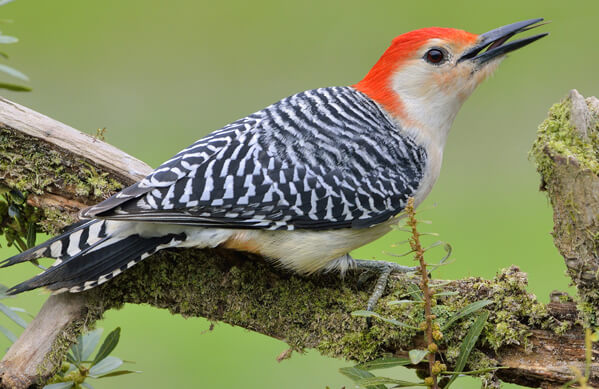Discovering Woodpeckers in Florida Habitats: Where to Find These Birds
Discovering Woodpeckers in Florida Habitats: Where to Find These Birds
Blog Article
Revealing the Keys of Woodpeckers: Habits, Environment, and A Lot More
Woodpeckers, with their one-of-a-kind habits and specialized adaptations, have actually long captivated researchers and nature enthusiasts alike. These exceptional birds possess a variety of intriguing keys that clarified their survival approaches, environment preferences, and elaborate interaction techniques. By uncovering the enigmas surrounding woodpeckers' behavior and habitat options, a much deeper understanding of these avian wonders arises, using a peek right into their remarkable globe. What makes these birds genuinely remarkable, and exactly how do they browse their environment with such accuracy and ability? Allow's explore the exciting realm of woodpeckers and untangle the enigmatic information that make them such interesting topics of study.
Woodpecker Habits Insights
In examining woodpecker actions, an interesting display screen of specialized abilities and adjustments emerges, dropping light on their impressive ecological niche. Woodpeckers, recognized for their unique drumming on trees, possess a selection of behavioral qualities that contribute to their survival and success in their atmosphere.
Additionally, woodpeckers display an one-of-a-kind feeding behavior characterized by their capability to remove pests from tree bark using their specialized beaks. Their lengthy, barbed tongues aid in recording victim, while their strong neck muscle mass supply security and accuracy during pecking activities. This feeding method allows woodpeckers to accessibility covert insect larvae and extract them with impressive efficiency.
Habitat Preferences and Selection
What variables influence the environment preferences and selection of woodpeckers? Woodpeckers are highly adaptable birds recognized to live in numerous settings worldwide. However, they do show preferences for sure habitat features. One essential element affecting woodpecker environment choice is the accessibility of suitable nesting sites. Woodpeckers generally prefer woodlands with a mix of mature trees that provide adequate opportunities for cavity excavation. These dental caries serve as important nesting and roosting websites for woodpeckers and are vital for their breeding success.
Additionally, woodpeckers reveal a preference for environments with an abundant supply of food sources. They are primarily insectivorous, feeding upon beetles, ants, larvae, and other bugs located in decaying wood or tree bark. Consequently, woodpeckers often tend to prefer woody locations with a diverse insect populace to satisfy their nutritional needs.
Moreover, the presence of dead or worn out trees is one more essential consider woodpecker habitat choice. These trees not only supply food resources however likewise offer suitable substratum for cavity excavation. Dead trees are essential for the upkeep of healthy woodpecker populations, as they play an Check This Out important duty in the woodpeckers' life cycle and environment dynamics.
Feeding Habits and Diet Plan Composition
Woodpeckers show a specialized feeding behavior focused on foraging for pests within different habitats. Their diet plan mainly contains pests such as beetles, ants, caterpillars, and crawlers, which they find browse this site by touching on tree bark and listening for the sound of motion inside. Woodpeckers use their strong beaks to drill into the wood and their lengthy, barbed tongues to remove target from crevices. Along with pests, woodpeckers likewise take in tree sap, fruits, nuts, and seeds, including range to their diet regimen relying on the season and availability of food sources.
The foraging methods of woodpeckers are well-adapted to their arboreal way of living. Woodpeckers play a crucial role in maintaining the wellness of woodlands by managing insect populaces and assisting in the disintegration of wood.
Drumming Appears and Interaction
Utilizing rapid drumming sounds on various surface areas, woodpeckers utilize a distinctive form of communication to signal territory boundaries and bring in friends. This drumming behavior is not just a way of interaction however additionally serves as a means for woodpeckers to develop their presence within a certain location. The strength, rate, and pattern of the drumming can convey vital information to other woodpeckers around.
Woodpeckers utilize drumming audios to introduce their existence in a territory and to advise off prospective trespassers. The loud and repetitive nature of the drumming works as a clear signal to various other woodpeckers that the area is currently asserted. This aids in lowering disputes and reducing physical confrontations between individuals.

Survival Adaptations and Specialized Composition

Conclusion
Finally, woodpeckers exhibit special habits, such as drumming noises for interaction, and have specialized makeup for survival in their selected habitats. Their feeding habits and diet regimen structure even more demonstrate their versatility to numerous settings. By understanding these elements of woodpeckers, researchers and preservationists can better secure and protect these fascinating birds and their communities.
Report this page